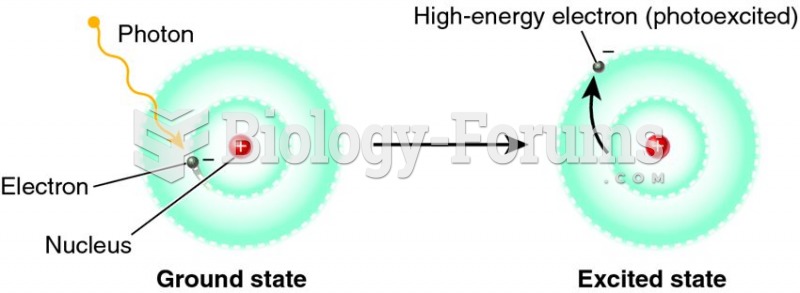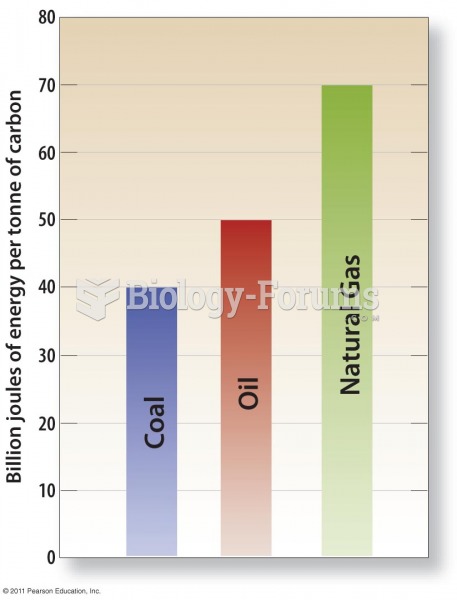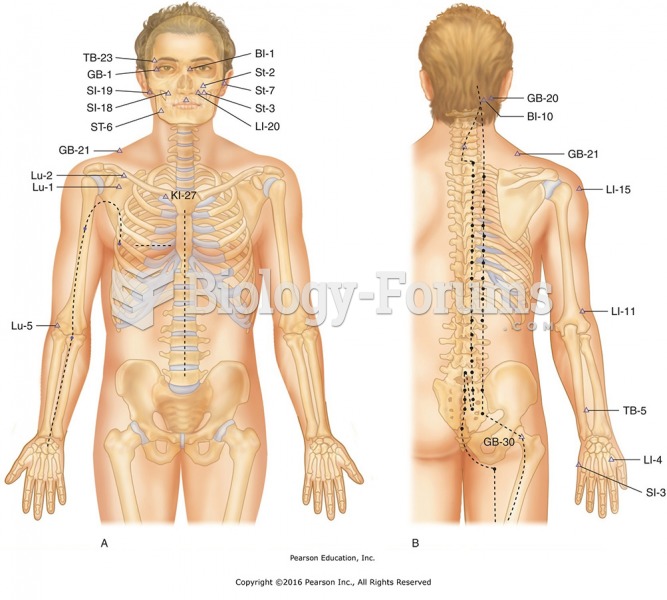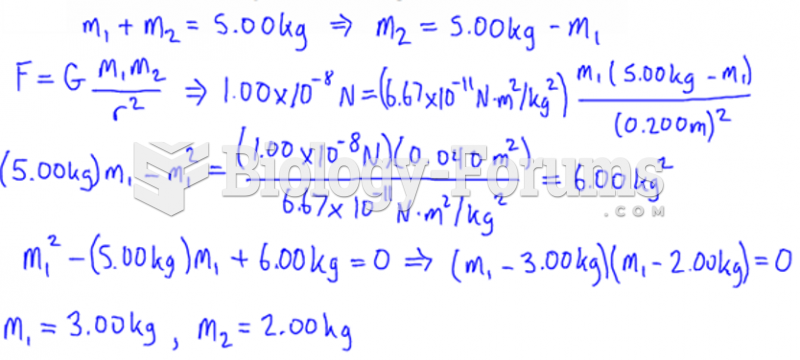(a) What is the rest energy (in joules) of a subatomic particle whose (rest) mass is 6.7 1031 kg? (b) How many MeV's of energy is this?
Question 2
The lifetime of a free neutron is 887 s. If a neutron moves with a speed 2.9 108 m/s relative to an observer in the lab, what does the observer measure the neutron's lifetime to be?
Question 3
It takes approximately ___________ seconds for a particle moving at the speed of light to travel the 150 million kilometers from the Sun to Earth.
Fill in the blank(s) with correct word
Question 4
If the electron is a lepton, then the antilepton is a(n) __________.
Fill in the blank(s) with correct word
Question 5
A __________ interacts via the strong interaction.
Fill in the blank(s) with correct word
Question 6
The color force between quarks is carried by __________.
Fill in the blank(s) with correct word
Question 7
The quark structure of the neutron is __________.
Fill in the blank(s) with correct word
Question 8
The quark structure of the proton is __________.
Fill in the blank(s) with correct word
Question 9
The ______________ interaction alone can change one type of quark into another.
Fill in the blank(s) with correct word
Question 10
The six quantum numbers for quarks are __________, __________, __________, __________, __________, and __________.
Fill in the blank(s) with correct word
Question 11
The __________ binds quarks together.
Fill in the blank(s) with correct word
Question 12
Quarks, originally isolated in cosmic ray showers, are elementary particles possessing electric charge equal to 1/3 or 2/3 the magnitude of the charge of a proton.
Indicate whether the statement is true or false
Question 13
The fundamental particles that are the building blocks of hadrons are __________.
Fill in the blank(s) with correct word
Question 14
According to the Weinberg-Salam model, the massless carriers of the electroweak interaction acquire mass in the process of ______________.
Fill in the blank(s) with correct word
Question 15
Steven Weinberg, Abdus Salam, and Sheldon Glashow shared the 1979 Nobel Prize in physics for their development of __________.
Fill in the blank(s) with correct word
Question 16
Models for combining the electromagnetic, weak and strong nuclear interactions into a single basic force are __________.
Fill in the blank(s) with correct word
Question 17
Conservation of __________ is observed in strong and electromagnetic interactions, but not in weak interactions.
Fill in the blank(s) with correct word
Question 18
In all interactions __________ number is conserved.
Fill in the blank(s) with correct word
Question 19
The __________ are force-carrying particles.
Fill in the blank(s) with correct word
Question 20
A __________ does not interact via the strong interaction.
Fill in the blank(s) with correct word
Question 21
__________ is the collective name given for particles that interact via the strong force.
Fill in the blank(s) with correct word
Question 22
A particle with __________ obeys the Pauli exclusion principle.
Fill in the blank(s) with correct word
Question 23
A __________ has half-integral spin.
Fill in the blank(s) with correct word
Question 24
A __________ has integral spin.
Fill in the blank(s) with correct word
Question 25
The four fundamental forces in nature are the __________, __________, __________, and __________.
Fill in the blank(s) with correct word
Question 26
If a 1 kg mass is completely converted into energy, the amount of energy released would be __________.
Fill in the blank(s) with correct word
Question 27
If a twin goes on a trip in a high-speed rocket ship, when she returns home she will be younger than her twin sister who did not go on the trip because of the special relativistic effect of __________.
Fill in the blank(s) with correct word
Question 28
Because of their short lifetimes, very few muons that are produced in the upper atmosphere at high speeds should be observed at the surface of the Earth. Yet we detect large numbers of muons at ground level because of the special relativistic effect of __________.
Fill in the blank(s) with correct word
Question 29
Since the mass of an object is the same for all observers, it is a relativistically ____________ quantity.
Fill in the blank(s) with correct word
Question 30
If you do an experiment on Earth, and then do an identical experiment in a jet plane moving uniformly at a high speed, you get identical results from both experiments. This is an example of __________.
Fill in the blank(s) with correct word
Question 31
The mass of an electron and its antiparticle, a positron, is 0.511 MeV/c2 . In order to produce an electron-positron pair, a gamma ray must have an energy larger than 1.022 MeV because __________.
Fill in the blank(s) with correct word
Question 32
When it comes near a heavy nucleus, a gamma ray, which is a high energy photon, can disappear, and in its place there will be produced an electron and a positron, which both have mass. According to special relativity, this pair production is an example of __________.
Fill in the blank(s) with correct word
Question 33
An electron and a positron, which are two massive particles, can annihilate when they come together to produce two photons, which have no mass. According to special relativity, this pair annihilation is an example of __________.
Fill in the blank(s) with correct word
Question 34
Einstein's famous equation E = mc2 is a statement of __________.
Fill in the blank(s) with correct word
Question 35
The prediction from special relativity that the length of a moving object will be shortened in the direction of motion is called __________.
Fill in the blank(s) with correct word
Question 36
__________ is the prediction of special relativity that moving clocks run slow.
Fill in the blank(s) with correct word
Question 37
Particles possessing half-integral spins are called _________ and particles with integral spins are called ________.
a. quarks b. fermions
c. bosons d. antiquarks
Question 38
t and b quarks are named
a. truth and beauty.
b. up and down.
c. top and bottom.
d. Itchy and Scratchy.
e. none of the above.
Question 39
Quarks have electric charges of magnitude
a. e.
b. 1/3 e.
c. 2/3 e.
d. 0.
e. none of the above
Question 40
The electron
a. is an absolutely stable particle. b. decays via the weak interaction.
c. has zero mass. d. is a lepton.
Question 41
In interactions taking place by the weak force, which of the following quantities are conserved?
a. electric charge
b. baryon number
c. mass-energy
d. strangeness
e. linear momentum
f. angular momentum (spin)
Question 42
In interactions taking place by the strong force, which of the following quantities are conserved?
a. electric charge
b. baryon number
c. mass-energy
d. strangeness
e. linear momentum
f. angular momentum (spin)
Question 43
A particle that interacts via the strong force is a(n)
a. lepton.
b. baryon.
c. meson.
d. intermediate (or gauge) boson.
e. hadron.
Question 44
Quarks come in what flavors?
a. up, down and strange b. charm, top and bottom
c. red, green and blue d. all of the above
Question 45
The positron
a. is an antielectron.
b. was the first antimatter particle discovered.
c. is the same as a proton.
d. all of the above
Question 46
Which of the following are not relativistically invariant quantities?
a. the speed of light, c b. time
c. mass d. energy
Question 47
Which of the following is considered anitmatter?
a. u b. e
c. e+ d. d
Question 48
Mesons are composed of
a. antiquarks. b. quark-antiquark pairs.
c. quarks. d. three-quark combinations.
Question 49
Which of the following particle is unaffected by the strong force?
a. protons b. neutrons
c. mesons d. gauge bosons
Question 50
The spins of all known particles are either integral or half-integral multiples of
a. the baryon number. b. Plank's constant.
c. the Gravitational constant. d. the speed of light.
Question 51
Which of the following is not a fundamental force of nature?
a. strong nuclear force b. electroweak force
c. weak nuclear force d. electromagnetic interaction
Question 52
A quantum number for a quark is
a. strangeness.
b. beauty.
c. charm.
d. truth.
e. all of the above.
Question 53
Quarks are bound together in hadrons by
a. the strong force. b. the weak force.
c. intermediate (or gauge) bosons. d. the color force.
Question 54
The fundamental particles that are the building blocks of hadrons are
a. leptons.
b. baryons.
c. mesons.
d. intermediate (or gauge) bosons.
e. quarks.
Question 55
Steven Weinberg, Abdus Salam, and Sheldon Glashow shared the 1979 Nobel Prize in physics for their development of a(n)
a. electroweak theory.
b. GUT.
c. quark theory.
d. generalized theory of relativity.
e. theory of strangeness.
Question 56
A model for combining the electromagnetic, weak and strong nuclear interactions into a single basic force is a(n)
a. electroweak theory.
b. GUT.
c. quark theory.
d. generalized theory of relativity.
e. theory of strangeness.
Question 57
Conservation of ____________ is observed in strong and electromagnetic interactions but not in weak interactions.
a. baryon number
b. lepton number
c. strangeness
d. charm
e. beauty
Question 58
Conservation of ___________ is observed in all interactions.
a. baryon number
b. lepton number
c. strangeness
d. charm
e. beauty
Question 59
A force-carrying particle is a(n)
a. lepton.
b. baryon.
c. meson.
d. intermediate (or gauge) boson.
e. hadron.
Question 60
Why do strange particles have long lifetimes compared to other strongly interacting particles?
a. No one knowsthis is why they are called strange..
b. They only decay via the weak interaction.
c. They are more massive.
d. none of the above
Question 61
A spin 1/2 particle that does not interact via the strong interaction is a(n)
a. lepton.
b. baryon.
c. meson.
d. intermediate (or gauge) boson.
e. hadron.
Question 62
The top quark
a. is the only quark not yet detected experimentally.
b. has been shown not to exist.
c. was discovered at Fermilab.
d. none of the above
Question 63
Gluons
a. are carriers of the color force.
b. possess color charge.
c. can interact with each other via the color force.
d. can form glueballs.
e. all of the above
Question 64
The color force between quarks is carried by
a. mesons.
b. the strong force.
c. leptons.
d. gluons.
e. none of the above.
Question 65
How many quark colors are there?
a. 1 b. 3
c. 6 d. none of the above
Question 66
How many quark flavors are there?
a. 1 b. 3
c. 6 d. none of the above
Question 67
What is the quark structure of an electron?
a. uud
b. udd
c. uuu
d. ddd
e. the question does not make sense
Question 68
What is the quark structure of a neutron?
a. uud
b. udd
c. uuu
d. ddd
e. the question does not make sense
Question 69
What is the quark structure of a proton?
a. uud
b. udd
c. uuu
d. ddd
e. the question does not make sense
Question 70
Electrons are spin one-half, photons are
a. also spin one-half. b. spin zero.
c. spin one. d. none of the above.
Question 71
Half-integral spin means spin
a. 1/2 b. 1/2, 1, 3/2, 2, ...
c. 1/2, 3/2, 5/2, ... d. none of the above
Question 72
A particle with ____________ obeys the Pauli exclusion principle.
a. zero rest mass
b. very high energy
c. half-integral spin
d. integral spin
e. charm
Question 73
A particle with a half-integral spin is a
a. boson.
b. lepton.
c. fermion.
d. hadron.
e. muon.
Question 74
A particle with an integral spin is a
a. boson.
b. lepton.
c. fermion.
d. hadron.
e. muon.
Question 75
A fundamental force in nature is the
a. strong interaction.
b. weak interaction.
c. electromagnetic interaction.
d. gravitational interaction.
e. all of the above
Question 76
If a 1-kg mass is completely converted into energy, the amount of energy released would be
a. 0.333 J.
b. 1 J.
c. 3 108 J.
d. 9 1016 J.
e. none of the above.
Question 77
If a twin goes on a trip in a high-speed rocket ship, when she returns home she will be younger than her twin sister who did not go on the trip because of
a. time dilation.
b. length contraction.
c. the equivalence of mass and energy.
d. the principle of relativity.
e. none of the above.
Question 78
From the point of view of a muon produced high in the atmosphere, the reason it can get to the ground before it decays is because
a. relativity gives it extra time to get there.
b. of the uncertainty principle.
c. it is a short distance to the ground.
d. relativity shortens the distance to the ground.
Question 79
From the point of view of an observer on the Earth, a muon produced high in the atmosphere can reach the ground before decaying because
a. relativity gives it extra time to get there.
b. of the uncertainty principle.
c. it is a short distance to the ground.
d. relativity shortens the distance to the ground.
Question 80
Because of their short lifetimes, very few muons that are produced in the upper atmosphere at high speeds should be observed at the surface of the Earth. Yet we detect large numbers of muons at ground level because of
a. time dilation.
b. length contraction.
c. the equivalence of mass and energy.
d. the principle of relativity.
e. none of the above.
Question 81
If you do an experiment on Earth, and then do an identical experiment in a jet plane moving uniformly at a high speed, you get identical results from both experiments. This is an example of
a. time dilation.
b. length contraction.
c. the equivalence of mass and energy.
d. the principle of relativity.
e. none of the above.
Question 82
The rest energy of an electron and its antiparticle, a positron, is 0.511 MeV. In order to produce an electron-positron pair, a gamma ray must have an energy larger than 1.022 MeV because of
a. time dilation.
b. length contraction.
c. the equivalence of mass and energy.
d. the principle of relativity.
e. none of the above.
Question 83
What is the symbol for a photon?
a. n b.
c. d. none of the above
Question 84
When it comes near a heavy nucleus, a gamma ray, which is a high energy photon, can disappear, and in its place there will be produced an electron and a positron, which both have mass. This pair production is an example of
a. time dilation.
b. length contraction.
c. the equivalence of mass and energy.
d. the principle of relativity.
e. none of the above.
Question 85
The notation used to represent an antiparticle is
a. the particle symbol with a bar over it. b. e+, in the case of the positron.
c. +, in the case of the antimuon. d. all of the above.
Question 86
When a particle and antiparticle meet, they are said to annihilate each other. What does this mean?
a. They explode into tiny fragments.
b. They are destroyed, and turned into an equivalent amount of energy.
c. They merge and simply disappear.
d. none of the above
Question 87
What is different between a particle and its antiparticle?
a. opposite electric charge
b. opposite strangeness
c. opposite charm
d. all of the above
Question 88
An electron and a positron, which are two massive particles, can annihilate when they come together to produce two photons, which have no mass. This pair annihilation is an example of
a. time dilation.
b. length contraction.
c. the equivalence of mass and energy.
d. the principle of relativity.
e. none of the above.
Question 89
What is the mass of an electron in MeV/c2?
a. 0.511 MeV/c2
b. 105.7 MeV/c2
c. 1777 MeV/c2
d. none of the above
Question 90
Einstein's famous equation E = mc2 is a statement of
a. time dilation.
b. length contraction.
c. the equivalence of mass and energy.
d. the principle of relativity.
e. none of the above.
Question 91
The prediction from special relativity that the length of a moving object will be shortened in the direction of motion is
a. time dilation.
b. length contraction.
c. the equivalence of mass and energy.
d. the principle of relativity.
e. none of the above.
Question 92
The prediction of special relativity that moving clocks run slow is
a. time dilation.
b. length contraction.
c. the equivalence of mass and energy.
d. the principle of relativity.
e. none of the above.
Question 93
Two observers, A and B, move relative to each other. A claims B's clocks run slow. In this case, B will claim A's clocks
a. run fast. b. run slow, too.
c. are no good. d. none of the above
Question 94
If you are driving down a highway at 65 mph with your headlights on, the speed of the light emitted from your headlights as seen by a person standing on the side of the road is
a. c.
b. c + 65 mph.
c. slightly greater than c.
d. none of the above.
Question 95
What is the symbol for a neutrino?
a. n b.
c. d. none of the above
Question 96
What is meant by neutrino oscillations?
a. oscillating movement of neutrinos
b. one neutrino type (e.g., muon neutrinos) changing into another (e.g., tau neutrinos)
c. random changes in mass of neutrinos
d. none of the above
Question 97
Mesons are composed of three-quark combinations.
a. True
b. False
Indicate whether the statement is true or false
Question 98
In a particle reaction, the number of baryons going into the reaction must equal the number emerging from the reaction.
a. True
b. False
Indicate whether the statement is true or false
Question 99
The spin of elementary particles is quantized.
a. True
b. False
Indicate whether the statement is true or false
Question 100
An elementary particle has a measurable size.
a. True
b. False
Indicate whether the statement is true or false
Question 101
All neutrinos are left handed.
a. True
b. False
Indicate whether the statement is true or false
Question 102
Recent experiments suggest that the lifetime of the proton is over 1033 years, more than what is predicted by the simplest grand unified theories.
a. True
b. False
Indicate whether the statement is true or false
Question 103
According to the standard model of elementary particle physics, there are six flavors of quarks, each of which comes in three colors.
a. True
b. False
Indicate whether the statement is true or false
Question 104
The quark and antiquark in a meson are always of the same flavor.
a. True
b. False
Indicate whether the statement is true or false
Question 105
The color force is carried by gluons but gluons do not have color charge themselves.
a. True
b. False
Indicate whether the statement is true or false
Question 106
The color force between quarks is carried by mesons.
a. True
b. False
Indicate whether the statement is true or false
Question 107
There are three flavors of quarks.
a. True
b. False
Indicate whether the statement is true or false
Question 108
The quark structure of the neutron is udd.
a. True
b. False
Indicate whether the statement is true or false
Question 109
The quark structure of the proton is uud.
a. True
b. False
Indicate whether the statement is true or false
Question 110
Charm, beauty, and truth are three quantum numbers for quarks.
a. True
b. False
Indicate whether the statement is true or false
Question 111
All quarks have 1/3 the electric charge of an electron.
a. True
b. False
Indicate whether the statement is true or false
Question 112
Quarks are held together by the color force. Electrons are made of quarks.
a. True
b. False
Indicate whether the statement is true or false
Question 113
Leptons are the fundamental particles that are the building blocks of hadrons.
a. True
b. False
Indicate whether the statement is true or false
Question 114
Steven Weinberg, Abdus Salam, and Sheldon Glashow shared the 1979 Nobel Prize in physics for their development of GUTs.
a. True
b. False
Indicate whether the statement is true or false
Question 115
Electroweak theory results in models for combining the electromagnetic, weak and strong nuclear interactions into a single basic force.
a. True
b. False
Indicate whether the statement is true or false
Question 116
The strong force depends upon the electric charge of the particles involved.
a. True
b. False
Indicate whether the statement is true or false
Question 117
Strangeness is conserved observed in strong and electromagnetic interactions, but not in weak interactions.
a. True
b. False
Indicate whether the statement is true or false
Question 118
Baryon number is conserved in all interactions.
a. True
b. False
Indicate whether the statement is true or false
Question 119
Some antiparticles are identical to the particles they correspond to.
a. True
b. False
Indicate whether the statement is true or false
Question 120
Every particle has a corresponding antiparticle.
a. True
b. False
Indicate whether the statement is true or false
Question 121
A photon is a boson.
a. True
b. False
Indicate whether the statement is true or false
Question 122
Bosons are force-carrying particles.
a. True
b. False
Indicate whether the statement is true or false
Question 123
Leptons are built out of quarks.
a. True
b. False
Indicate whether the statement is true or false
Question 124
A lepton interacts via the strong interaction.
a. True
b. False
Indicate whether the statement is true or false
Question 125
Hadrons are particles that interact via the strong force.
a. True
b. False
Indicate whether the statement is true or false
Question 126
Any particle with spin obeys the Pauli exclusion principle.
a. True
b. False
Indicate whether the statement is true or false
Question 127
A boson has half-integral spin.
a. True
b. False
Indicate whether the statement is true or false
Question 128
A fermion has integral spin.
a. True
b. False
Indicate whether the statement is true or false
Question 129
Short range interactions generally have carrier particles of greater mass than those for long range interactions.
a. True
b. False
Indicate whether the statement is true or false
Question 130
The four fundamental forces in nature are the strong, weak, electromagnetic, and gravitational interactions.
a. True
b. False
Indicate whether the statement is true or false
Question 131
The speed of light is a relativistically invariant quantity.
a. True
b. False
Indicate whether the statement is true or false
Question 132
If a 1-kg mass is completely converted into energy, the amount of energy released would be 9 1016 J.
a. True
b. False
Indicate whether the statement is true or false
Question 133
Because of time dilation, if a twin goes on a trip in a high-speed rocket ship, when she returns home she will be younger than her twin sister who did not go on the trip.
a. True
b. False
Indicate whether the statement is true or false
Question 134
Because of their short lifetimes, very few muons that are produced in the upper atmosphere at high speeds should be observed at the surface of the Earth. Yet we detect large numbers of muons at ground level because of the Pauli exclusion principle.
a. True
b. False
Indicate whether the statement is true or false
Question 135
According to special relativity, at speeds approaching the speed of light, the kinetic energy of a moving object is not equal to 1/2 mv2.
a. True
b. False
Indicate whether the statement is true or false
Question 136
Since the rest energy of an electron and its antiparticle a positron is 0.511 MeV, a gamma ray must have an energy larger than 1.022 MeV to produce an electron-positron pair.
a. True
b. False
Indicate whether the statement is true or false
Question 137
Because of the equivalence of energy and mass, a gamma ray, which is a high energy photon, can disappear, and in its place there will be produced an electron and a positron, which both have mass.
a. True
b. False
Indicate whether the statement is true or false
Question 138
Because of the equivalence of mass and energy, an electron and a positron, which are two massive particles, can annihilate when they come together to produce two photons, which have no mass.
a. True
b. False
Indicate whether the statement is true or false
Question 139
Einstein's famous equation E = mc2 is a statement of the equivalence of energy and the square of the speed of light.
a. True
b. False
Indicate whether the statement is true or false
Question 140
Special relativity predicts that the length of a moving object will be elongated in the direction of motion.
a. True
b. False
Indicate whether the statement is true or false
Question 141
Special relativity predicts that moving clocks run slow.
a. True
b. False
Indicate whether the statement is true or false
Question 142
Lithium, Li-7, contains three protons and four neutrons and has a mass of 7.01600 u. What is the mass defect for this nucleus in atomic mass units?







